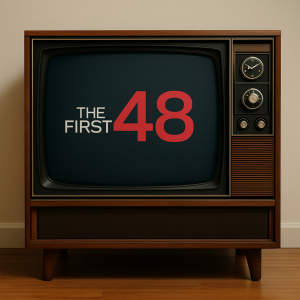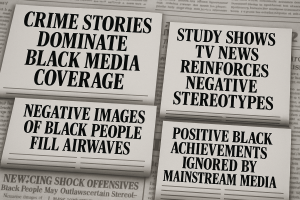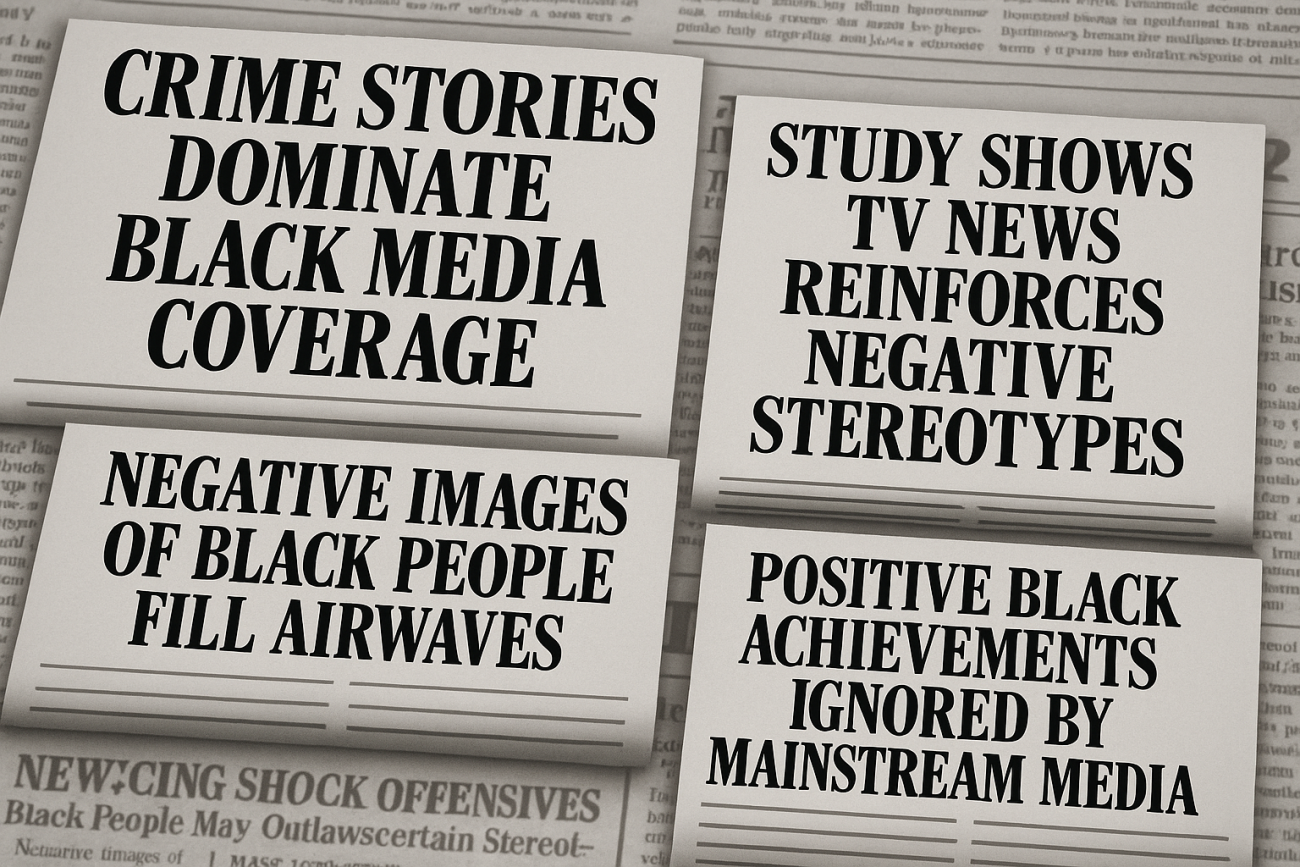Why the World Knows the Stereotype, but Not the Story: Rethinking the Visibility of Black Excellence in America
By Lana Reid | November 3, 2025
My go-to mental decompression activity sometimes includes binge-watching a few episodes of The First 48. It is not exactly relaxing, but the investigative rhythm of the show gives my brain something to latch onto while I unwind. Still, the storylines are painfully predictable: episode after episode features Black people in urban settings, often depicted through crime, conflict, or some gateway into the incarceration system. This narrow slice of Black life represents only a small fraction of the broader Black experience in America. What makes it even more troubling is that neither the people on screen nor the police departments involved are paid for their participation, yet those unpaid appearances become the version of Black life that millions of viewers absorb as reality.

During one of my binge sessions, an old conversation came back to me. A colleague in Kenya once mentioned that because of the American TV shows available there, many people believed that most Black Americans lived a “ghetto” lifestyle.
There was no malice in her comment. It was simply the impression formed by the media exported around the world.
But that moment stuck with me, because I immediately thought about a very different group of Black people in America that I have worked with, people who rarely make it into the media spotlight, yet represent generations of leadership, service, and success: the Divine Nine, the historically Black fraternities and sororities.
These organizations, Alpha Phi Alpha, Alpha Kappa Alpha, Kappa Alpha Psi, Omega Psi Phi, Delta Sigma Theta, Phi Beta Sigma, Zeta Phi Beta, Sigma Gamma Rho, and Iota Phi Theta, collectively have around 3.5 to 4 million members worldwide. That is millions of Black lawyers, judges, teachers, engineers, social workers, military leaders, entrepreneurs, pastors, entertainers, activists, and elected officials. Millions of people who, for over 100 years, have awarded scholarships, mentored youth, fed the homeless, raised voter awareness, led civil rights battles, and built lifelong networks of service and excellence.
And yet, many people have never heard of them.
The Visibility Gap
According to a 2023 survey by the Pew Research Center, 63 percent of Black adults believe news coverage of Black people is more negative than coverage of other racial groups, and 57 percent say the media only highlights certain segments of Black communities. At the same time, the four-million-strong network of the Divine Nine remains virtually invisible to many.

These organizations are all around us. They are the teachers in classrooms, the administrators running school districts, the nurses in hospitals, the CEOs behind major brands, the council members passing legislation, the sorority sister who leads your local nonprofit, the fraternity brother who fixes your credit score, tutors your child, or hires you for your first job.
Most people in this country, people who can identify a “ghetto” Black person faster than Google can complete a search, have no clue that Black fraternities and sororities even exist, even though they have produced generations of leaders.
So why is it that the world can easily recognize the image of a “ghetto” Black person, but not the everyday image of these highly educated, service-driven Black people?
Why is it that so many people can name Martin Luther King Jr., Maya Angelou, Johnnie Cochran, Jesse Jackson, Aretha Franklin, Harry Belafonte, Zora Neale Hurston, Hattie McDaniel, or even Terrence C. Carson, yet so few know the legacy they were connected to? How is it that someone can easily repeat a reality TV stereotype of a “ghetto” Black person, but cannot link Black excellence to the Divine Nine, the very institutions that helped shape so many of the figures we celebrate?
Why do millions of Americans know the fictional characters on Love & Hip Hop, yet not the real people who have been organizing political change, running community programs, and shaping national history for over a century?
The answer is not just cultural. It is structural.
What Gets Amplified, Gets Believed
Media exposure is not neutral. It is curated, targeted, and monetized. The stories of crime, dysfunction, and chaos are profitable. They are dramatic. They feed narratives already baked into the American imagination.
Because negative imagery of Blackness has circulated for decades, it becomes the default reference point, especially for those who do not live, work, or deeply interact with Black communities in real life.
Meanwhile, the normal, everyday, unremarkably successful lives of Black people rarely get broadcast. A Black man in a suit leading a Fortune 500 meeting is not considered “entertaining television.” A Black woman earning her PhD does not make breaking news. A fraternity hosting a scholarship banquet will not go viral the way a street fight will.
Collectively, the members of the Divine Nine number nearly 4 million, yet they receive far less recognition than the stereotype-driven images that flood the media.
What we see most often is not what is most true. It is what is most profitable.
This Is Not About Respectability. It Is About Balance.
This is not an argument that every Black person needs to be college-educated or polished in order to deserve respect. Black humanity is not earned through achievement.
But there is a problem when millions of people exist who disprove the stereotype, and yet the stereotype is the only story the world gets to hear.
There is a problem when people outside the United States genuinely believe that most Black Americans live like characters written by reality TV producers.
There is a problem when people inside the United States, including teachers, employers, and neighbors, are unaware that Black professional excellence is not rare, but deeply rooted and passed down through generations.
The problem is not that Black excellence is missing. The problem is the system that keeps it unseen.
I Do Not Have a Dog in the Divine Nine Fight
I am not a member of any Divine Nine organization. I do not have personal loyalty in this conversation. But I am loyal to the progress and empowerment of Black people. And if there is a 100-year-old system quietly producing scholars, leaders, and community builders, then people should know about it.
If the world is going to form an opinion about Black Americans, then at minimum, the image should be complete.
How can someone claim to “understand Black culture” and never have heard of Black people who built institutions that survived Jim Crow, economic exclusion, redlining, and generational discrimination?
How can someone critique Black America while being unaware that one in five Black college graduates is connected to the Divine Nine lineage?
Visibility shapes perception. Perception shapes policy. And policy shapes lives.
So here is the real question:
Why does the world know more about the negative stereotype than the documented, historic, community-rooted excellence that has existed for over 100 years?
And more importantly, who benefits from keeping it that way?
Further Reading: Official National Websites of the Divine Nine
- Alpha Phi Alpha Fraternity, Inc.
- Alpha Kappa Alpha Sorority, Inc.
- Kappa Alpha Psi Fraternity, Inc.
- Omega Psi Phi Fraternity, Inc.
- Delta Sigma Theta Sorority, Inc.
- Phi Beta Sigma Fraternity, Inc.
- Zeta Phi Beta Sorority, Inc.
- Sigma Gamma Rho Sorority, Inc.
- Iota Phi Theta Fraternity, Inc.
By Lana Reid — Author, Host, and Founder of Conversations in Color, a nonprofit 501(c)(3) dedicated to uplifting voices and cultivating dialogue within the Black community.
